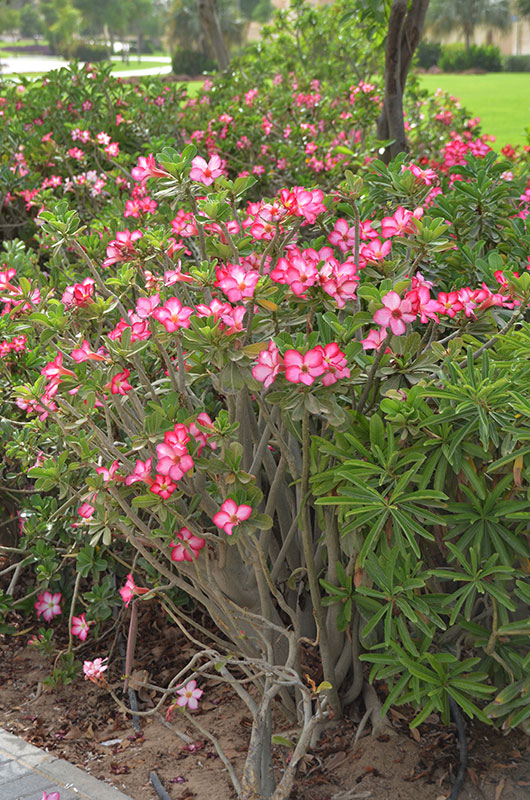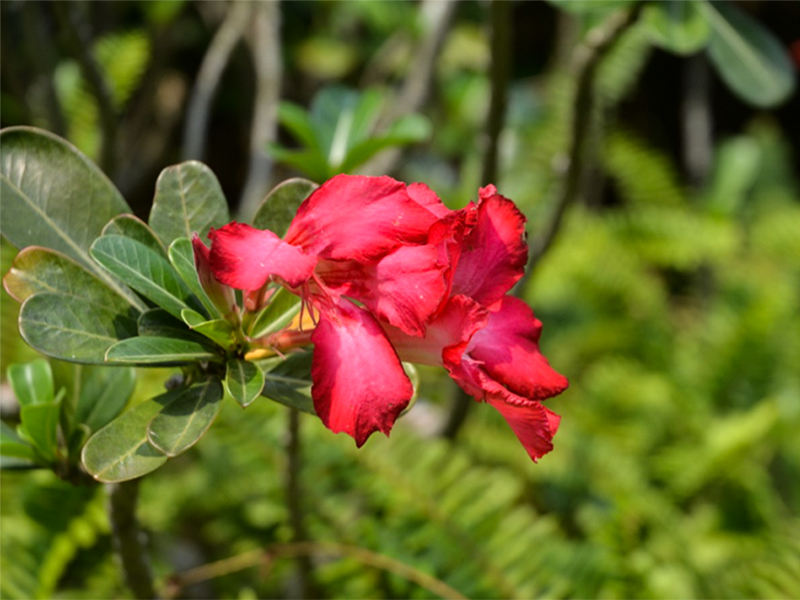| Landscape | Usually grown indoors as a houseplant or bonsai. |
| Propagation | A. obesum are typically propagated by seed or stem cuttings. The numerous hybrids are propagated mainly by grafting onto seedling rootstock. While plants grown from seed are more likely to have the swollen caudex at a young age, with time many cutting-grown plants cannot be distinguished from seedlings. |
| Cultivation | It requires a sunny location and a minimum indoor temperature in winter of 10 °C . It thrives on a xeric watering regime as required by cacti. |
| Pests | Polka-dot wasp moth caterpillars. |
| Notable Specimens | Niagara Parks Botanical Gardens, Niagara Falls, Ontario, Canada. Royal Park Rajapruek, Mae Hia, Thailand. |
| Habitat | Sahel regions |
| Leaf Description | The leaves are spirally arranged, clustered toward the tips of the shoots, simple entire, leathery in texture, 5–15 cm long and 1–8 cm broad. |
| Flower Description | The flowers are tubular, 2–5 cm long, with the outer portion 4–6 cm diameter with five petals. |
| Colour Description | The flowers tend to red and pink, often with a whitish blush outward of the throat. |



